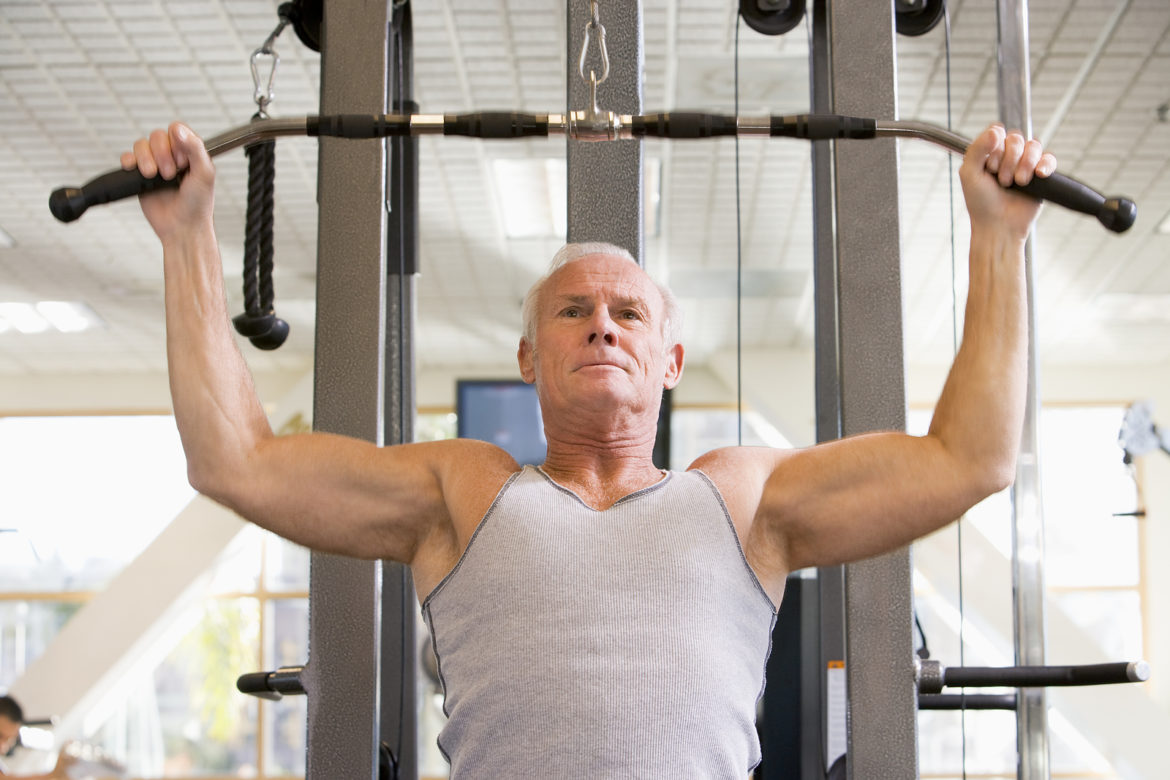For many older adults, exercise focuses on cardio activities like walking or swimming. However, resistance training, an often-overlooked part of fitness, offers remarkable benefits for older adults and should be vital to every senior’s fitness routine. Whether lifting weights, using resistance bands, or performing bodyweight exercises, resistance training improves muscle strength, bone health, balance, and overall well-being. This blog explores why resistance training is essential for seniors, how to get started, and the best exercises to boost strength and vitality.
The Importance of Resistance Training for Seniors
Muscle mass naturally declines as we age—a condition known as sarcopenia—leading to a loss of strength and mobility. This can increase the risk of falls, fractures, and injuries. Resistance training counteracts this muscle loss, helping seniors maintain functional strength, crucial for daily activities such as climbing stairs, carrying groceries, and even getting out of a chair.
In addition to strengthening muscles, resistance training has numerous other health benefits:
Prevents Osteoporosis
Regular strength training can help prevent osteoporosis by increasing bone density, which is particularly important for post-menopausal women and aging men.
Reduces Risk of Falls
Strengthening muscles improves balance and coordination, significantly reducing the risk of falls.
Improves Metabolic Health
Resistance training can improve insulin sensitivity and promote a healthy body composition by increasing lean muscle mass.
Enhances Mental Health
Exercise, including resistance training, stimulates the release of endorphins, which can elevate mood and reduce feelings of anxiety and depression.
How to Start Resistance Training Safely
Starting a resistance training program can be intimidating, especially for those who have never lifted weights before. However, it’s crucial to begin gradually and build strength over time. Here are some key steps to help you start safely:
Seek Professional Guidance
If you’re new to resistance training, working with a fitness instructor or physical therapist is a good idea to ensure proper form. This helps prevent injury and ensures you benefit most from each exercise.
Start Light
Begin with light weights or resistance bands, and gradually increase the weight as your muscles strengthen. Aim for 12-15 repetitions of each exercise, focusing on slow, controlled movements.
Warm Up
Always warm up before starting a workout. Gentle stretching or light cardio for five to ten minutes will prepare your muscles and reduce the risk of injury.
Listen to Your Body
Pay attention to how your body feels during and after exercise. Feeling muscle fatigue is normal, but sharp pain should not occur. If you experience discomfort, stop and consult with your fitness instructor.
Key Resistance Training Exercises for Seniors
Several simple but highly effective exercises can be performed by seniors to build strength, improve balance, and protect against injury. These exercises can be done with weights, resistance bands, or body weights.
Squats
Squats are a fantastic exercise for strengthening the lower body, particularly the thighs and glutes. They also help improve mobility and balance, making everyday activities like sitting and standing much easier.
How to do it: Stand with your feet shoulder-width apart. Slowly lower your body as if sitting in a chair, keeping your chest lifted and your knees behind your toes. Return to the standing position and repeat.
Bicep Curls
Bicep curls help strengthen the arms, making lifting groceries or carrying bags easier.
How to do it: Hold light dumbbells at your sides with palms facing forward. Slowly bend your elbows, lift the weights towards your shoulders, and lower them back down.
Seated Leg Lifts
This exercise strengthens the quadriceps and improves lower body mobility, essential for walking and stair climbing.
How to do it: Sit in a chair with your feet flat on the ground. Slowly extend one leg out in front of you, holding for a moment at the top, then lower it back down. Repeat on the other side.
Wall Push-Ups
Push-ups build upper body strength, targeting the chest, shoulders, and triceps without placing undue pressure on the joints.
How to do it: Stand facing a wall with your feet shoulder-width apart. Place your hands against the wall at shoulder height and slowly lower your chest towards the wall, then push back to the starting position.
Bridge
The bridge exercise strengthens the core, glutes, and hamstrings and improves posture and lower back strength.
How to do it: Lie on your back with your knees bent and feet flat on the floor. Slowly lift your hips towards the ceiling, hold for a moment, then lower back down.
How Often Should Seniors Do Resistance Training?
Seniors should incorporate resistance training two to three times a week for best results. Each session can last about 20-30 minutes and includes a variety of exercises that target different muscle groups. Allowing rest days between sessions is important to give muscles time to recover and grow.
In addition to strength training, seniors should also engage in aerobic activities like walking, cycling, or swimming to improve cardiovascular health and maintain overall fitness.
Staying Motivated
One of the hardest parts of maintaining a fitness routine is staying motivated. Setting clear goals and tracking progress can keep you on track. For example, you might aim to increase the number of squats you can do in a minute or try lifting slightly heavier weights after a few weeks.
Joining a fitness community or working out with a partner can also provide support and accountability. Sharing your progress and encouraging others can make resistance training enjoyable and help you stay consistent.
Conclusion
Resistance training is a game-changer for older adults looking to improve strength, mobility, and overall well-being. It helps prevent muscle loss, reduces the risk of osteoporosis, and boosts mental health and quality of life. By incorporating a few resistance exercises into your weekly routine, you’ll see improvements in your strength and daily function.
For more tips on staying fit and strong as you age and for products that support your fitness journey, visit nobol.com to learn more about how we can help you achieve your health goals.
